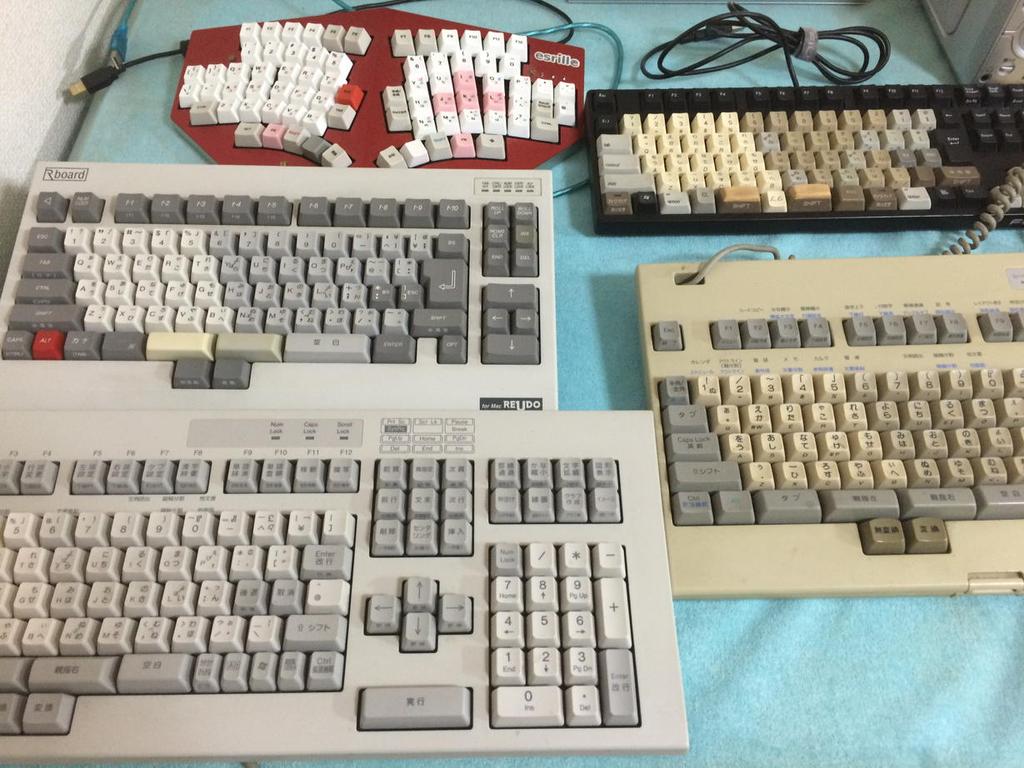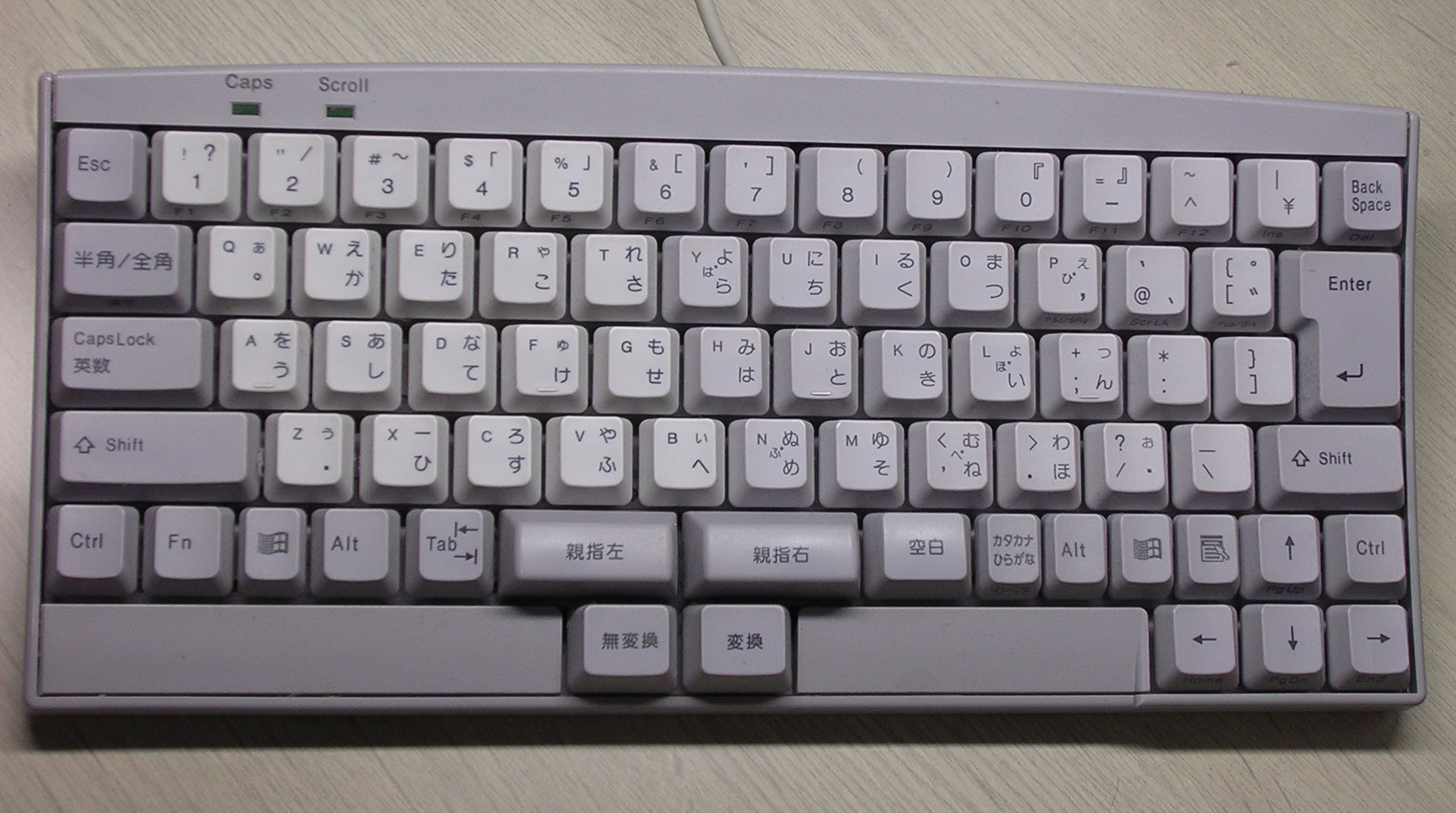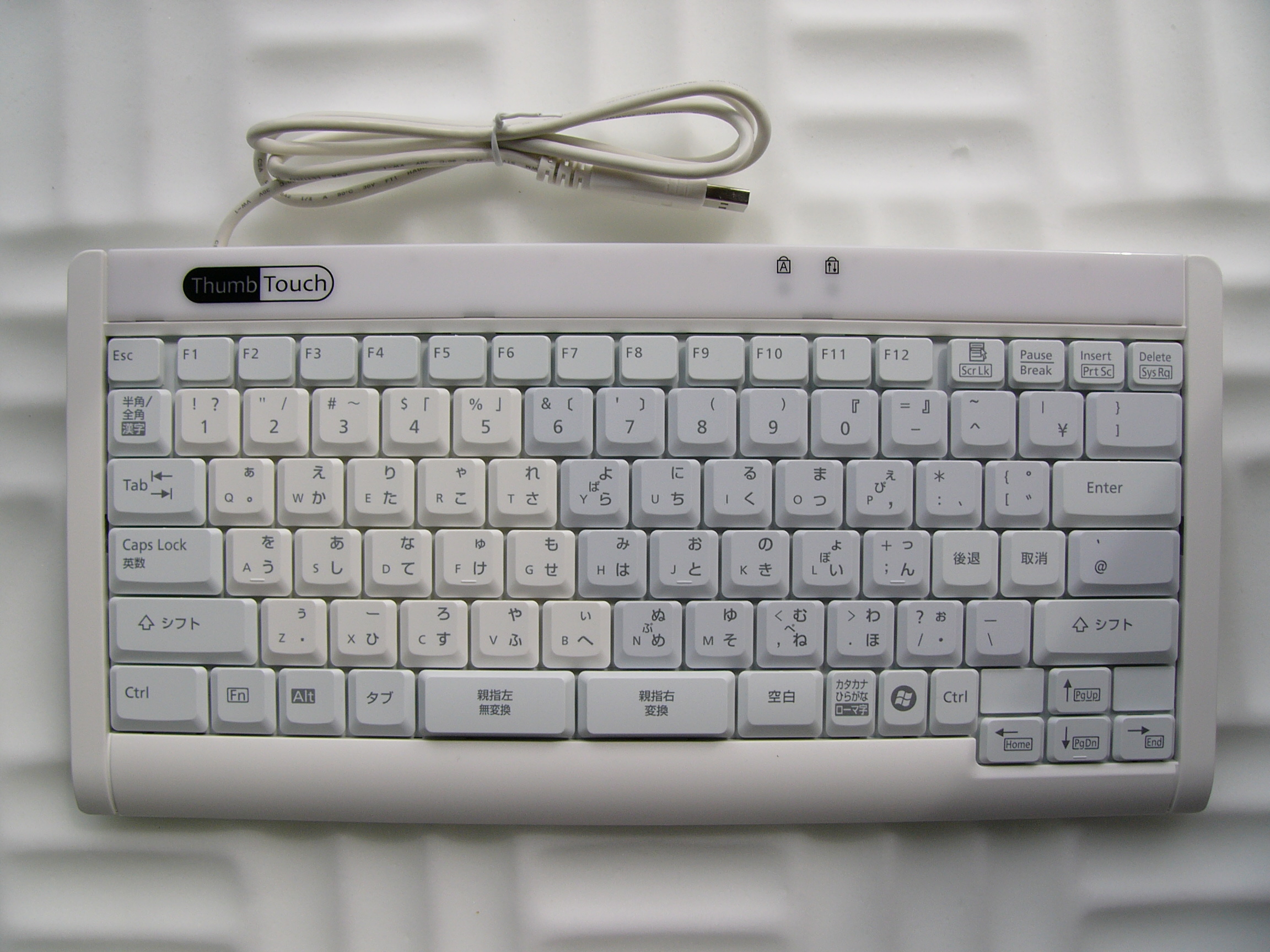Japan Thumb-Shift Keyboard (NICOLA layout)
Thumb-Shift Keyboard
- The thumb-shift (親指シフト) keyboard is a efficient input system for Japanese, by using 2 independent shift keys placed under the thumbs.
- It was created around 1978, led by Yasunori Kanda, at Fujitsu.
The thumb-shift design were later passed on from Fujitsu to NIHONGO NYURYOKU CONSORTIUM (Meaning, Japan Input Consortium) and officially named “NICOLA layout” (from the words NIhongo-nyuryoku COnsortium LAout).

Fujitsu OASYS Word Processors
Fujitsu FKB8579USB Thumb Shift Keyboard, Year 2001

This keyboard is recognized by the Operating System as a 106 keyboard, and the thumb left key generates a non-conversion key and the thumb right key generates the same key code as the conversion key. Therefore, in order to perform the thumb shift input, software that emulates the thumb shift arrangement using the conversion / non-conversion key as the thumb shift key is required. The product comes with Japanist, an IME with a built-in thumb shift emulation function. image source
Fujitsu FKB7628-801 Keyboard. Year 2010

Thumb-Shift Layout

Fujitsu's first Japanese word processor, named OASYS, with thumb-shift keyboard was launched in 1979 and became a big hit. As the line of products expanded, so did the popularity of thumb-shift keyboard. The share of OASYS in the Japanese word processor market reached 20 percent at one time (not all of OASYS were equipped with thumb-shift keyboard, though). But the adoption was slow to spread to other manufacturers' product lines. Although Fujitsu was open to adoption by other manufacturers, there was little incentive for them to adopt their rival's system in the (then) fiercely competitive environment of word processor market. It was only in 1989 when Nihongo Nyuuryoku Consortium (Japanese input consortium) was established with a participation of several companies, including Fujitsu, Sony, Apple Computer, Japan IBM and Panasonic, as the promotion body of thumb-shift. The rights regarding the use of thumb-shift were officially transferred from Fujitsu to the Consortium. It was also a time in which there was a rapid shift from dedicated word processors to personal computers. Although Fujitsu kept producing PCs with a thumb-shift keyboard, including portables, most users preferred ones with an ordinary keyboard and there were very few PC manufacturers which offered thumb-shift. Thus, the growth of PC market did not translate into that of thumb-shift and the share of thumb-shift declined quickly. As of October 2011, three models of thumb-shift keyboard for PC, as well as two portable PCs are on sale.
NICOLA is a variation of thumb-shift keyboard. In this keyboard layout, Henkan (“変換”, conversion) is merged with right thumb-shift and Muhenkan (“無変換”, non-conversion) merged with left one because USB HID does not allow additional key left thumb-shift and right thumb-shift .
[2019-12-08 Thumb-shift keyboard ]
See also: Japanese Keyboard Layouts
References
- OASYS 100DP
http://www.ykanda.jp/catalog/100dp/100dp.htm - complete list of OASYS models
http://great-roof.net/oasys/oas_list.htm
- OASYS100 (1980)
- By Fujitsu.
- https://www.fujitsu.com/global/about/corporate/history/products/computer/wordprocessor/oasys100.html
- Thumb-Shift Keyboard (1980)
- By Fujitsu.
- https://www.fujitsu.com/global/about/corporate/history/products/computer/wordprocessor/keyboard.html
- USB親指シフトキーボード(コンパクト) 新発売
- By Fujitsu Component Limited.
https://www.fujitsu.com/jp/group/fcl/resources/news/press-releases/2001/20011106.html
 OASYS 100 Word Processor, Year 1980
OASYS 100 Word Processor, Year 1980 OASYS 100DP Word Processor, Year 1992
OASYS 100DP Word Processor, Year 1992 OASYS 30-AP101
OASYS 30-AP101